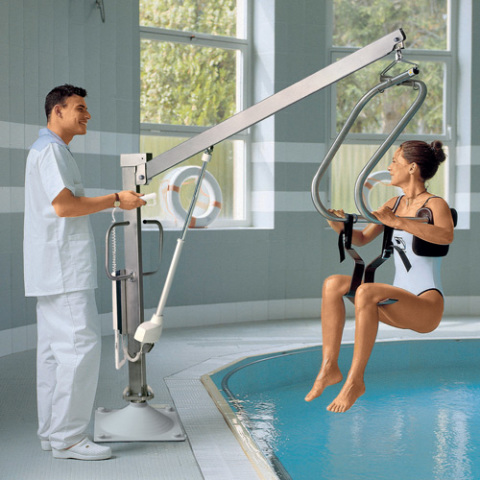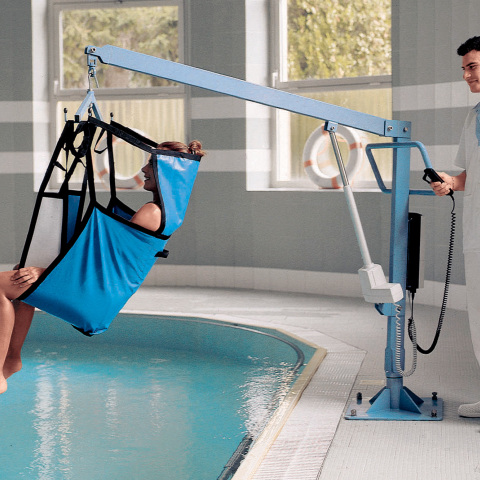For a very long time, the architectural design of public facilities like swimming pools has not been very accommodating to people with limited mobility. Because of this, individuals have had to forgo nice experiences or settle for uncomfortable alternatives.
Luckily, technological innovations are now bridging the gap. One such significant advancement is the development of devices like the swimming pool person lifter, which is mostly powered by actuators.
Let’s explore the relationship between lifters and actuators, how lifters shape the lives of people with mobility impairments, and the best way to use this device.
What is a Swimming Pool Person Lifter?
A swimming pool person lifter is a motor designed for persons with limited mobility that allows them to safely enter and exit swimming pools. With this invention, they can enjoy swimming and other aquatic recreational activities with little or no assistance.
Functions of Actuators in A Swimming Pool Person Lifter
A swimming pool person lifter cannot properly function without a lift mechanism i.e actuators. When activated, the actuators provide force for lifting and lowering the device into the pool at the desired depth. They also determine the speed at which the lifter goes up and down.
Actuators have built in safety features, which in turn activate the safety measures incorporated into the lifter. For instance, some electric linear actuators have feedback sensors that help ensure that the lifter halts at the determined position when the control button is pushed.
Finally, electric actuators help in load management. This feature makes sure that the weight that the lifter is made to carry does not go beyond what it was designed for which reduces the risk of accidents.
Swimming Pool Lifter Types
There are different pool lifter options that suit the varying needs and requirements of pool areas and users. Some of the available types are discussed briefly:
Fixed Pool/Floor Mounted Lifts
This variation of pool lifts is permanently installed into the pool deck to aid movements into and out of the pool. They are ideal for community pools, hotels, and other public locations where a permanent accessibility solution is required.
Since floor mounted lifts are permanent, it is easy to integrate them into the design of the swimming pool from the beginning of pool construction. This guarantees more structural support for the lift system, and it removes the need to modify construction designs later on.
Portable Pool Lifter
One advantage that the portable lift system has is its freestanding design, which makes it easy to move it to and from the pool area. You don’t have to install it in the pool area or make major modifications to the pool to accommodate the lifter.
This kind of lift is well suited for private pools and other places where permanent installations are not feasible or required.
Spa/Hot Tub Hoist
A spa/hot tub is designed for smaller bodies of water like hot tubs, therapy pools, and spas. Although it may be used for traditional pools, it is not the most practical or effective solution because of its limited lifting capacity and range of motion, among other factors.
Wall-Mounted Lifts
Wall-mounted swimming pool lifters are installed on the wall or vertical surface near the pool. They provide a permanent accessibility solution and are particularly suitable when the floor space for a floor-mounted lifter is not available.
Cruise Ship Lifts
Unlike the regular pool lifter, the cruise ship pool lift is specially designed to withstand the rockiness of the ocean’s tides. This lift type is usually characterized by a beam supported by vertical posts installed on the pool deck.
With this installed, no cruise ship guest is left behind, and everyone can access the pool area.
How are Swimming Pool Person Lifters Used?
To properly use these devices, there is a process to follow.
Placement
The user is carefully placed in the sling of the lifter. If the lifter being used is a portable one, it should be on the pool deck before the placement is done.
Lowering into the Water
When the user is comfortably seated in the lifter, the seatbelt is fastened, and other safety measures are in place. The lift operator or carer then uses the control system to lower the device into the water.
Water Entry
When the lifter reaches the desired water depth, the user exits the lifter and begins swimming.
Water Exit
When it’s time to exit the pool, the above process is done in reverse. The pool lift is activated to raise the seat or sling from the water back to the pool deck.
Never seen a swimming pool person lifter in action? Check it out!
What are the Benefits of a Swimming Pool Person Lifter?
Some advantages that swimming pool person lifters afford people with limited mobility are outlined below.
Accessibility
This lift system allows persons with reduced mobility to enjoy equal access to swimming, snorkelling, water aerobics, and other recreational activities. It eliminates barriers to entry and promotes inclusivity.
Independence
Pool lifters promote independence by reducing the need for extensive assistance from others, thereby promoting a sense of empowerment.
Safety
With safety designs such as locking mechanisms, emergency stop button seatbelts, etc, in place, pool lifters create a safe and reliable swimming environment for people with limited mobility.

Conclusion
A swimming pool person lifter is an invaluable tool for ensuring the safety and accessibility of individuals with mobility issues in and around swimming pools. One crucial component that plays a significant role in the functionality of a person lifter is the linear actuator.
Overall, the role of linear actuators in swimming pool person lifters is crucial in providing a reliable, safe, and efficient solution for individuals with mobility limitations to enjoy the benefits of swimming and aquatic activities. These actuators enhance the functionality of the lifter, making it an indispensable tool for inclusive and accessible pool environments.




